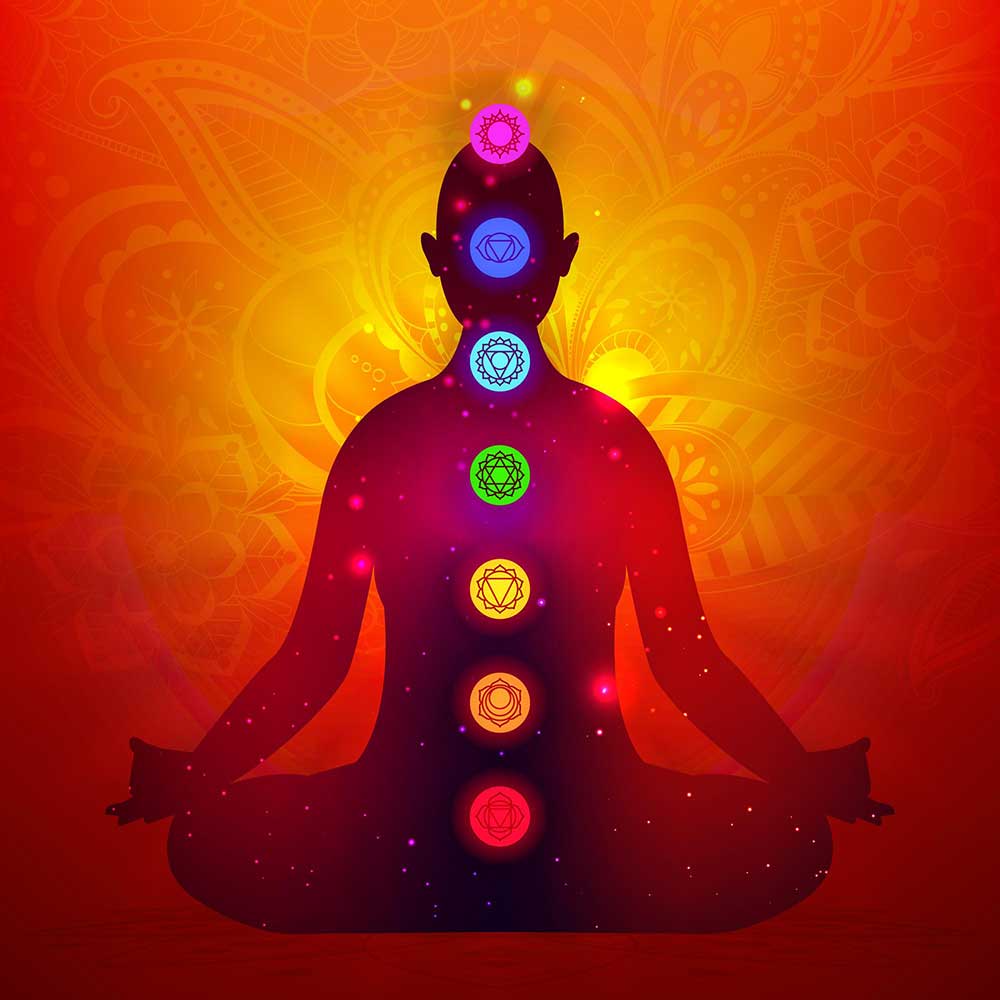
Chakras are the energy centers within our bodies that are believed to correspond to different areas of our physical and spiritual being. There are seven main chakras, each with its own unique qualities and characteristics. By understanding these chakras, we can begin to harness their power and bring balance to our lives.
The Root Chakra – Muladhara
The root chakra, also known as Muladhara, is located at the base of the spine. It is associated with feelings of stability, security, and grounding. When the root chakra is balanced, we feel a sense of safety and resilience. However, when it is imbalanced, we may experience fear, anxiety, or a lack of confidence. To balance the root chakra, we can engage in grounding activities such as walking barefoot in nature or practicing yoga poses that focus on the lower body.
The Sacral Chakra – Svadhisthana
Moving up the body, we come to the sacral chakra, known as Svadhisthana. This chakra is located in the lower abdomen, just below the navel. It is associated with our emotions, creativity, and sensuality. When the sacral chakra is balanced, we experience a healthy flow of emotions and a strong connection to our creative energy. However, when it is imbalanced, we may struggle with feelings of guilt, shame, or a lack of inspiration. To balance the sacral chakra, we can engage in creative activities such as painting, dancing, or journaling.
The Solar Plexus Chakra – Manipura
Moving further up the body, we arrive at the solar plexus chakra, known as Manipura. This chakra is located in the upper abdomen, near the diaphragm. It is associated with our personal power, confidence, and self-esteem. When the solar plexus chakra is balanced, we feel a sense of empowerment and self-assurance. However, when it is imbalanced, we may struggle with low self-esteem, a lack of motivation, or difficulty asserting ourselves. To balance the solar plexus chakra, we can engage in activities that boost our self-confidence, such as affirmations or setting and achieving goals.
The Heart Chakra – Anahata
Moving towards the center of the chest, we come to the heart chakra, known as Anahata. This chakra is associated with love, compassion, and forgiveness. When the heart chakra is balanced, we feel a deep sense of love and connection to ourselves and others. However, when it is imbalanced, we may struggle with feelings of resentment, anger, or a lack of empathy. To balance the heart chakra, we can practice acts of kindness, practice self-love and forgiveness, and surround ourselves with loving and supportive relationships.
The Throat Chakra – Vishuddha
Continuing up the body, we arrive at the throat chakra, known as Vishuddha. This chakra is located in the throat and is associated with communication, self-expression, and authenticity. When the throat chakra is balanced, we are able to express ourselves clearly and honestly. However, when it is imbalanced, we may struggle with communication issues, fear of speaking our truth, or a lack of self-expression. To balance the throat chakra, we can engage in activities such as singing, speaking our truth, or practicing active listening.
The Third Eye Chakra – Ajna
Moving towards the center of the forehead, we come to the third eye chakra, known as Ajna. This chakra is associated with intuition, wisdom, and inner guidance. When the third eye chakra is balanced, we have a clear perspective and can trust our intuition. However, when it is imbalanced, we may struggle with indecision, lack of clarity, or difficulty trusting our inner voice. To balance the third eye chakra, we can engage in activities such as meditation, visualization, or practicing mindfulness.
The Crown Chakra – Sahasrara
Finally, at the top of the head, we reach the crown chakra, known as Sahasrara. This chakra is associated with spiritual connection, enlightenment, and cosmic consciousness. When the crown chakra is balanced, we experience a deep sense of connection to something greater than ourselves. However, when it is imbalanced, we may feel disconnected from our spirituality or struggle with a lack of purpose. To balance the crown chakra, we can engage in activities such as prayer, meditation, or spending time in nature.
Balancing and Healing Your Chakras
Now that we have explored each of the seven chakras, it’s important to understand how to balance and heal them. There are various techniques and practices that can help bring our chakras into alignment and promote overall well-being.
One effective method is through meditation. By focusing on each chakra individually and visualizing it spinning and radiating vibrant energy, we can encourage balance and healing. Another practice is through the use of affirmations. By affirming positive statements related to each chakra, we can reprogram our subconscious mind and promote healing.
In addition to meditation and affirmations, other practices such as yoga, Reiki, sound healing, and crystal therapy can also be beneficial in balancing and healing the chakras. It’s important to find what works best for you and incorporate these practices into your daily routine.
By understanding and working with our chakras, we can tap into the immense power and potential within ourselves. When our chakras are balanced and aligned, we experience improved physical health, emotional well-being, and a deep sense of spiritual connection. So, take the time to explore and nurture your chakras, and watch as your life transforms in ways you never thought possible.
Remember, the journey to chakra alignment is a lifelong process. It requires patience, self-reflection, and a willingness to explore and delve into the depths of our being. But with dedication and an open mind, the rewards are immeasurable. So, embark on this enlightening journey and unlock the energetic potential within you. Your body, mind, and spirit will thank you for it.
Disclaimer: The information provided in this article is for educational purposes only and should not be used as a substitute for professional medical or psychological advice. Always consult with a qualified healthcare provider before making any changes to your healthcare routine.